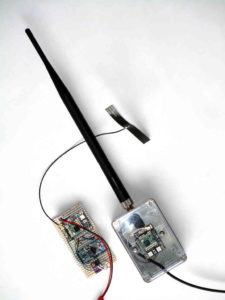At Measuring coaxial cable loss with a voltmeter I discussed measuring terminated coax cable loss with an RF voltmeter, and it had some real practical limitations.
This article explores using a nanoVNA to measure line loss in a similar scenario. We will use 6m of Belden 8359 (RG58A/U) @ 3.6MHz.
The same technique could be used with a quality antenna analyser.
Expectation
A short digression, what is the specification Matched Line Loss (MLL) at 3.6MHz? Using TLLC we get 0.171dB, that is our expectation.
Return Loss of SC section
A common method proposed is to measure Return Loss (RL) of a section with load end RL=0dB and halve it. Many experts advise that the section should be terminated in a short circuit (S) because short circuits are more reliable than open circuits. So let’s get cracking.
Above is measured |s11| using a nanoVNA with recent OSL calibration from 1-30MHz. |s11| @ 3.6MHz is by eye -0.651dB, RL=-|S11|, so RL/2=0.651/2=0.325dB. Continue reading Measuring coaxial cable loss by reflection with a VNA





